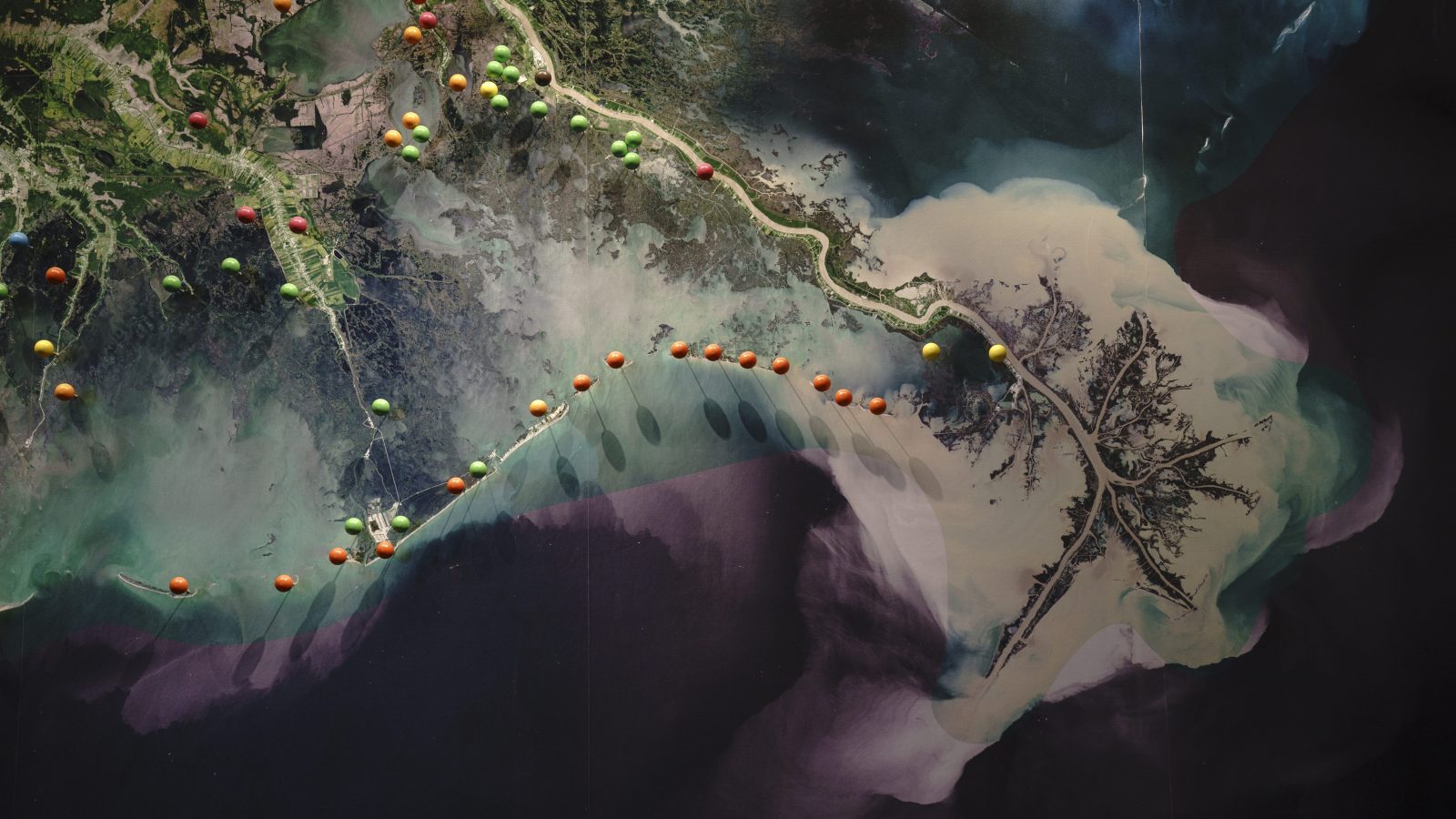Over 1000’s of years, the Mississippi River wended its method by way of the luxurious and dense wetlands of the Barataria Basin in what’s now south-central Louisiana. Because it flowed south on its method to the ocean, the river regularly poured sediment into the basin, gifting it with recent, nutrient-rich river mud that replenished the land and prevented coastal erosion. However Twentieth-century improvements like dams and levees stopped the river’s pure methods. This, together with current sea-level rise and the fixed battering of supercharged hurricane seasons, means the ocean now gnaws steadily on the backside of the state, inflicting gradual however catastrophic land loss. Since 1932, the Barataria has misplaced 17 % of its land. It’s predicted to lose one other 200-plus sq. miles within the subsequent 20 years.
To fight this, Louisiana officers broke floor Thursday on an bold, $2.92 billion mission to divert sediment from the Mississippi River into the basin, mimicking the pure processes of the river’s stream in an try to save lots of the state’s disappearing coast. The initiative is step one in Louisiana’s $50 billion Coastal Grasp Plan, funded partially by a lawsuit settlement from the devastating Deepwater Horizon oil spill of 2010. Although many laud the mission, some fear it can hurt current wildlife within the basin, whereas taking a really very long time to do its work.
The principle occasion for the mid-Barataria Sediment Diversion Mission will likely be “punching a gap within the levee” that forestalls the Mississippi River from often overflowing its banks and altering course, mentioned Bren Haase, the chair of the state’s Coastal Safety and Restoration Authority. The mission includes putting in a posh gate construction by way of the Mississippi River’s levee, permitting some water to stream right into a channel, which can then empty out over the basin and wash into the ocean, carrying mud, silt, and clay with it to create new land. It’ll take 5 years to construct. Over 50 years, the diversion mission ought to add 21 sq. miles of land to the basin, in keeping with Haase.
Supporters observe the mission will assist restore a degraded ecosystem to a few of its former glory. “There are giant areas of open water the place the marsh has simply eroded and sunk away,” mentioned Natalie Snider, affiliate vp for the Environmental Protection Fund’s Local weather Resilient Coasts and Watersheds program.

Engineers factored sea-level rise projections of as much as two and a half toes into the mission’s design. However some scientists warn that sea-level rise is finally a wild card. There’s no understanding precisely how a lot, how or shortly, oceans will go up within the coming many years — and in some unspecified time in the future, funding will doubtless run out for updates. For all of the acres gained, they mentioned, many will nonetheless be misplaced over time to the ravages of local weather change.
“It’s mitigation, not restoration,” mentioned Rex Caffey, an affiliate professor of wetlands and coastal assets at Louisiana State College. “Slowing down the bleed.”
The mission has additionally been met with outcry from a few of the individuals who make their residing from the area’s fisheries. Louisiana has essentially the most biorich fisheries of any state, and a few say the inflow of freshwater from the mission will decimate saltwater-loving inventory within the basin, like oysters and shrimp.
“We battle each day looking for methods to assist our shrimpers survive value impacts because of the inflow of imported seafood,” mentioned Kerri Callais, a councilmember-at-large within the parish of east St. Bernard and a board member of the Save Coastal Louisiana Coalition. “We’re going to knowingly create a state of affairs that can exacerbate all of these points.”
Coastal authorities are working to dissuade these issues and mitigate any potential detrimental penalties for native fisheries, with $360 million within the mission’s building funds for use to assist wetland-adjacent communities, oyster farmers, and shrimpers.
The mission is the most important and costliest coastal restoration mission ever tried within the state of Louisiana, and among the many largest in the USA. It’s additionally one which different states are watching intently. As Louisiana makes use of the proceeds from previous disasters to shore up its future, it’s a technique and scale that different coastal communities in Maryland, New York, Massachusetts, and different states could look to make use of sooner or later.
Haas additionally notes that whereas on a smaller scale, different, related coastal tasks have proven indicators of success inside a matter of years. Change, he mentioned, is a matter of necessity.
“Completely it can change the basin,” mentioned Haas. “It’s a dying basin. It’s been altering for 100 years.”
This story has been up to date.


